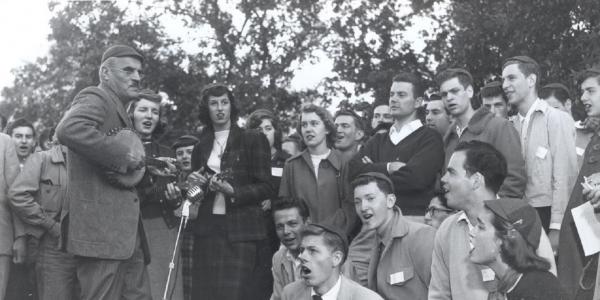At that time, X-rays were largely understood to be a wave-like phenomenon. Compton’s experiments showed that X-rays have duality: They behave like a particle as well.
“It was really huge; this was an unexpected discovery,” said Erik Henriksen, an associate professor of physics at Washington University. “To say that something could behave both like a wave and a particle in somehow the same object was confounding then — and honestly, it's quite confounding now, but it underlies our entire understanding of the universe through quantum mechanics.”
Henriksen joined the October 21 St. Louis on the Air episode to discuss how Compton’s discovery paved the way for quantum mechanics and modern-day astrophysics.
Related Event: Washington University’s Compton Centennial Celebration


